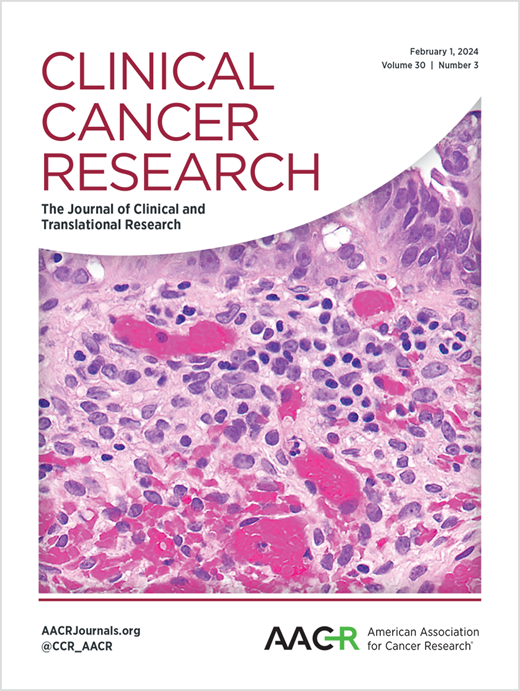FDA-AACR优化肿瘤药物剂量的策略:选择首次人体试验的剂量
IF 10.2
1区 医学
Q1 ONCOLOGY
引用次数: 0
摘要
剂量优化已经成为肿瘤药物开发的焦点,正如最近美国食品和药物管理局(fda)的项目Optimus所强调的那样。传统上,大多数肿瘤药物开发项目确定了最大耐受剂量,并在随后的临床试验和上市前应用中推进该剂量。这种方法已被常规应用于细胞毒性化疗,其中高剂量通常产生更高的疗效和毒性。然而,它不太适合现代肿瘤药物的更有针对性的药理学,其中过度升级可能只会增加额外的毒性。相反,利用整个药物开发过程中积累的全部数据的范例可以更好地确定最佳剂量,从而最大限度地减少剂量不足(导致暴露于亚治疗剂量)和过量(导致不必要的毒性)的风险。在首次人体试验(FIH)中,适当选择剂量至关重要,因为它有助于有效地确定后续试验的最佳剂量。以往试验的非临床研究和临床数据可以为FIH剂量选择和试验设计提供信息。在缺乏背景资料的情况下,已经发展了建模和模拟技术来综合信息以确定合理的起始剂量。此外,创新的模型知情临床试验设计允许统计指导剂量递增和推荐,并可以实时更新,以最大限度地提高FIH试验中的潜在患者益处。不幸的是,这些技术仍然没有得到充分利用。在这里,在三篇讨论剂量优化创新策略的系列论文中的第一篇,我们强调了对FIH肿瘤试验中剂量选择和优化的期望并提供了建议。本文章由计算机程序翻译,如有差异,请以英文原文为准。
FDA-AACR Strategies for Optimizing Dosages for Oncology Drug Products: Selecting Dosages for First-In-Human Trials
Dosage optimization has become a focus in oncology drug development, as highlighted by recent U.S. Food and Drug Administration initiatives including Project Optimus. Traditionally, most oncology drug development programs identify a maximum tolerated dosage and advance this dose in subsequent clinical trials and premarket applications. This approach has been routinely applied for cytotoxic chemotherapeutics, where higher dosages generally yield more efficacy as well as toxicity. However, it is less suited for the more targeted pharmacology of modern oncology drugs, where excessive escalation may only add additional toxicity. Instead, paradigms that utilize the totality of data accumulated throughout drug development can better determine optimized dosages that minimize the risk of underdosing, leading to exposure to subtherapeutic dosages, and overdosing, leading to unnecessary toxicities. Appropriate selection of dosing in first-in-human (FIH) trials is crucial, as it facilitates the efficient identification of optimized doses for subsequent trials. Nonclinical research and clinical data from previous trials can inform both FIH dosage selection and trial design. When background data is lacking, modeling and simulation techniques have been developed to integrate information to determine rational starting dose. Additionally, innovative model-informed clinical trial designs allow for statistically guided dose escalation and recommendation, and can be updated in real time to maximize potential patient benefit within the FIH trial. Unfortunately, these techniques remain underutilized. Here, in this first paper in a series of three discussing innovative strategies for dosage optimization, we highlight expectations and provide suggestions for the future of dosage selection and optimization in FIH oncology trials.
求助全文
通过发布文献求助,成功后即可免费获取论文全文。
去求助
来源期刊

Clinical Cancer Research
医学-肿瘤学
CiteScore
20.10
自引率
1.70%
发文量
1207
审稿时长
2.1 months
期刊介绍:
Clinical Cancer Research is a journal focusing on groundbreaking research in cancer, specifically in the areas where the laboratory and the clinic intersect. Our primary interest lies in clinical trials that investigate novel treatments, accompanied by research on pharmacology, molecular alterations, and biomarkers that can predict response or resistance to these treatments. Furthermore, we prioritize laboratory and animal studies that explore new drugs and targeted agents with the potential to advance to clinical trials. We also encourage research on targetable mechanisms of cancer development, progression, and metastasis.
 求助内容:
求助内容: 应助结果提醒方式:
应助结果提醒方式:


